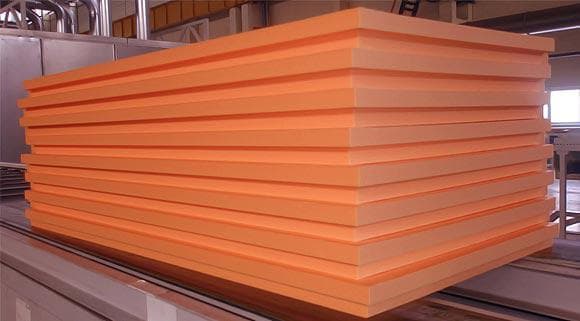
A pile-screw foundation is much cheaper than the simplest strip foundation, it is built much faster, and at any time of the year and does not depend on the topography of the site. Its only significant drawback is the unattractive empty space between the ground and the first floor.
To eliminate this shortcoming, resort to various methods of finishing.
Screw pile - a metal pipe with threads at one end and a flat head at the other, somewhat reminiscent of a huge nail. Piles can reach a length of 2.5 m, have blades at the end, and not threads or threads throughout the body. To prevent corrosion, the products are covered with ship primer - black.
The empty space under the building not only looks unaesthetic, but also poses a threat to the structure. Evaporation of wet soil, snow and rain getting under the building, grass sprouting - all this contributes little to the preservation of the building, and small animals - from lizards to cats, willingly use this space.
On the video, finishing the basement of the pile screw foundation:
Finishing allows you to solve the listed problems. The general principle of cladding is very simple and cost-free.
Brick, basement siding, and even simple plaster are used as cladding.

This is the most expensive method, and it also requires certain knowledge and skills. If they exist and the costs do not frighten the owner of the building, then this option is easy to implement. It has a lot of advantages:
The disadvantages include the cost of such a solution and the duration of installation: masonry takes time.

This option successfully imitates brick and masonry, but at the same time it differs in much less weight and costs much less.
Socle siding is a vinyl panel of increased strength and rigidity. It also features a more reliable docking method and high resistance to wind loads.
Their advantages are:
The only drawback can be called that in terms of durability, the plinth panels are still inferior to brick.
This is a metal profiled sheet with a zinc coating that protects the steel from corrosion. It is painted in a variety of colors, has a thickness of 9.5 to 0.7 mm and is more than affordable.
Material advantages:

Product disadvantages:
On the video, finishing the base of the pile screw foundation with corrugated board:
This option can only be implemented together with basement insulation. Its essence boils down to attaching heat insulator plates made of dense material to the frame and applying a plaster layer on them.
Plates are pre-primed. As a plaster mixture, it is better to use silicone or fiberglass, since they are the most resistant to moisture.
The disadvantage of the pile foundation is a rather cold floor. And if in the southern regions this is not a big problem, then in the middle latitudes the plinth has to be insulated.
There are many methods of warming. The choice is determined by the height of the pile columns, their location, the material of the piles and the topography of the site.
There are 2 fundamentally different approaches:
On the video insulation of the basement of the pile foundation:
Regardless of which material is chosen for thermal insulation, the general sequence of actions is almost the same.
On the video process of complete insulation:
Not every material is suitable for basement insulation. Proximity to the ground implies very high resistance to moisture, mechanical strength and at the same time excellent thermal insulation properties.
Preference is given to synthetic materials. Firstly, they do not attract rodents, and secondly, they are highly moisture resistant and not susceptible to mold. Minvata is excluded unambiguously. Basalt can be used, but is very inconvenient during installation.

Penoizol has similar characteristics. But unlike polystyrene foam and polystyrene, it allows steam to pass through without passing moisture.

The disadvantage is the same - a rather high price. You also need to take into account the large weight of the product.
Brickwork simultaneously serves as both a heat insulator and a decorative finish for the basement. Despite the high cost, this option is often the most profitable.
Finishing and insulating the basement of a pile-screw foundation is not so difficult. Different materials are used for this, which allows you to choose the best option for each case.